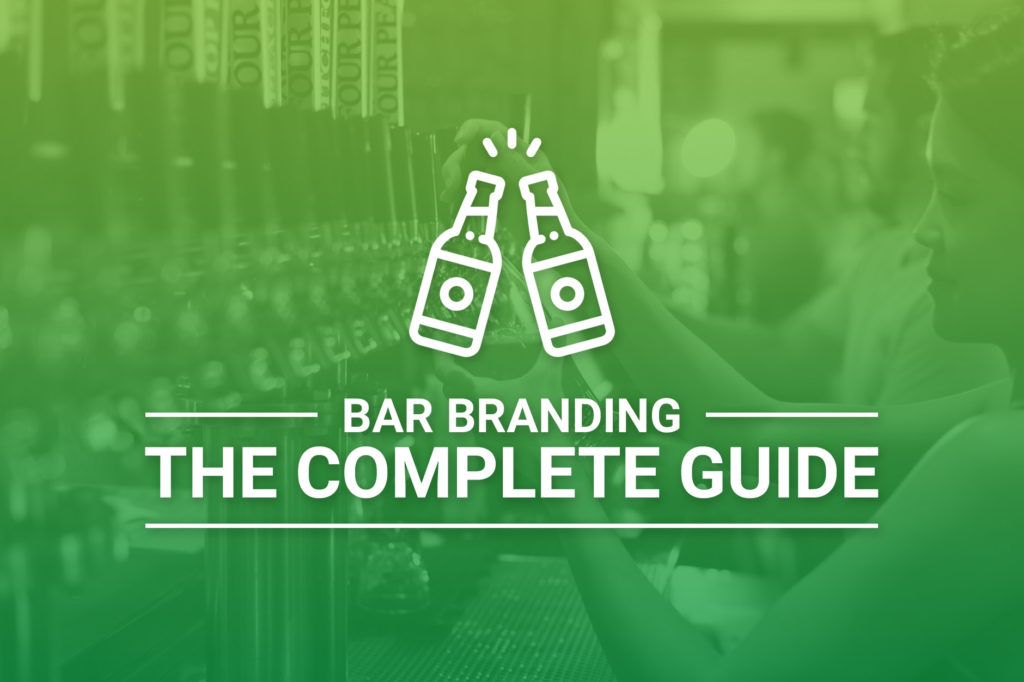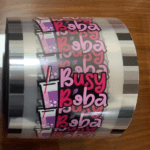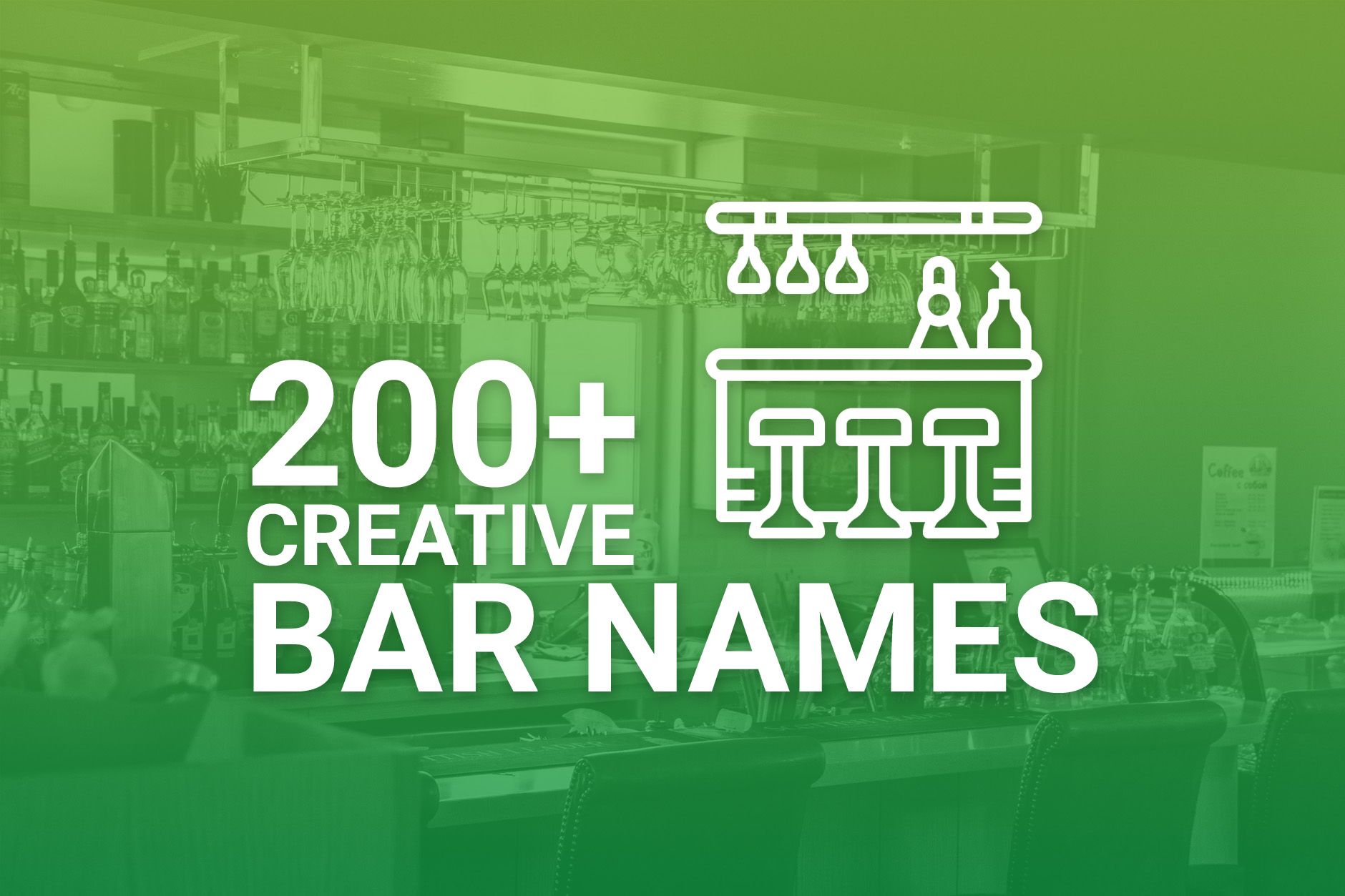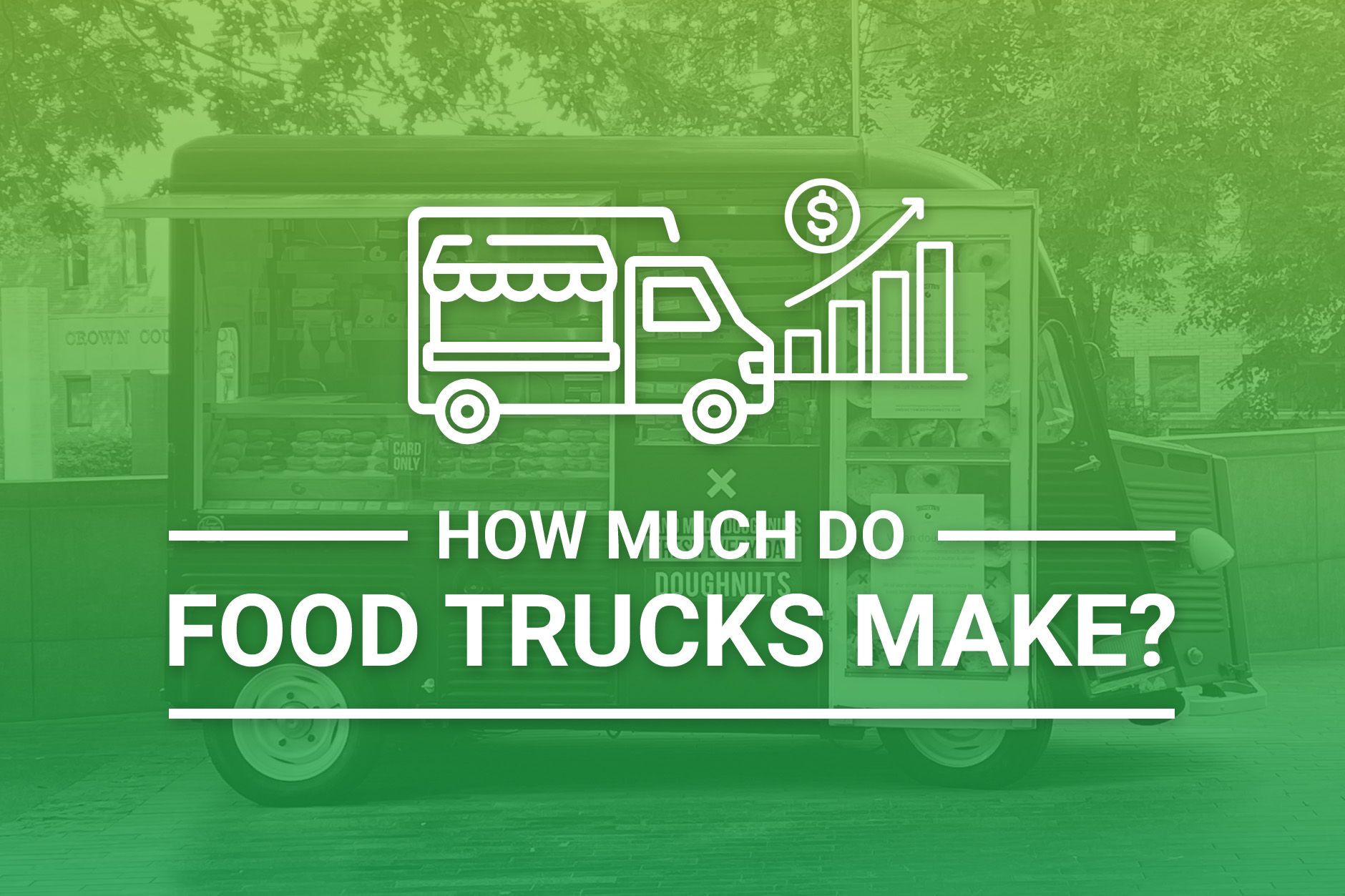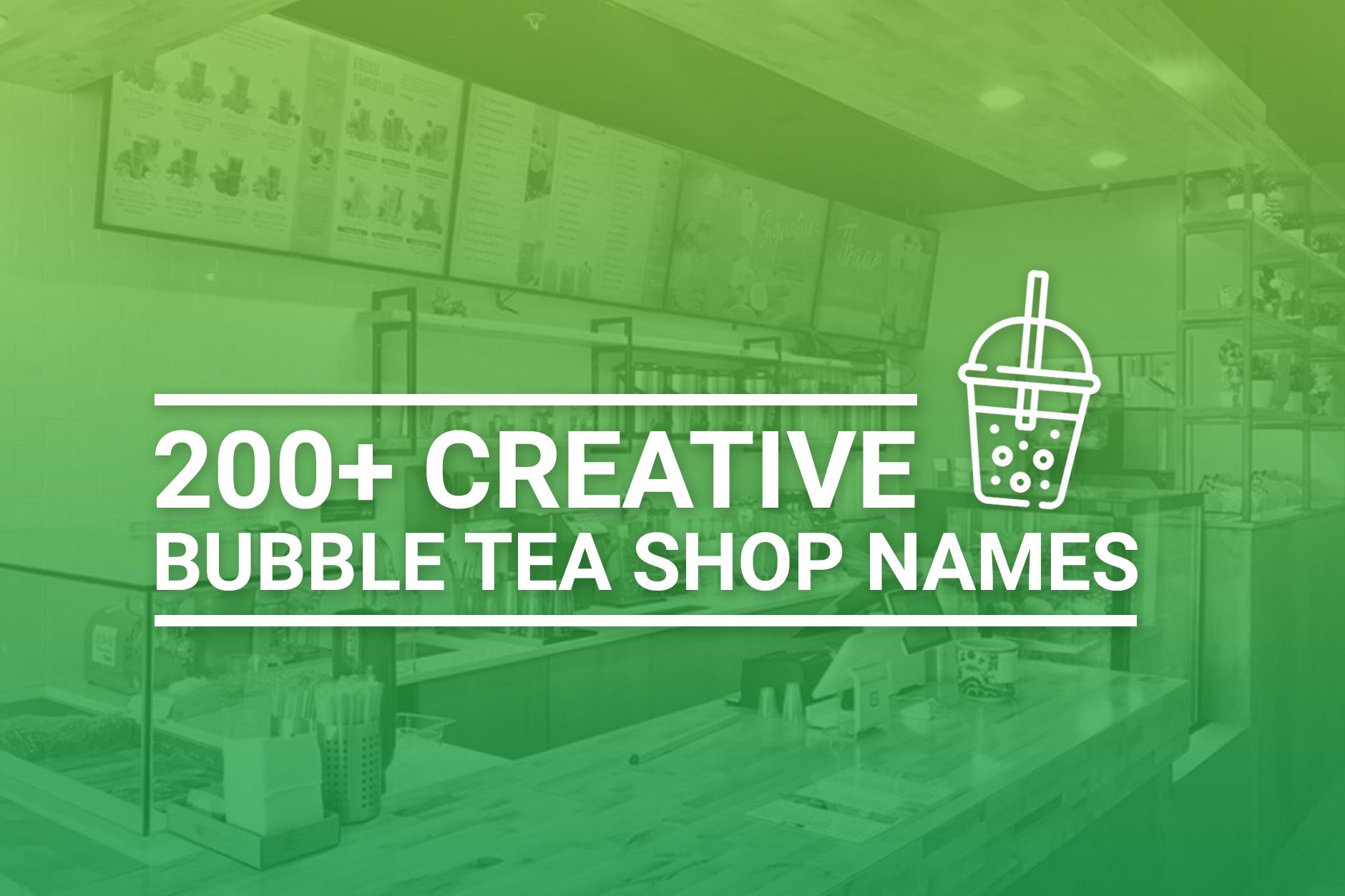You’ve done all of the work: written a business plan, gotten funding, secured a liquor license, and hired employees. But before you open your bar, pub, or brewery, there is something that you absolutely must be sure to do: figure out branding.
Developing a brand may seem less important than some other aspects of getting a bar up and running. Yet branding is vital to the success of any company – including bars and breweries. With a great brand, you can set yourself apart from the competition, increase recognition, and let your customers know what to expect.
Of course, developing a great brand is easier said than done. Below, we have put together a complete guide to branding your bar. Once you have crafted the perfect brand, give Budget Branders a call for a quote on quality disposable products that feature your amazing new brand.
Why Is Branding Important?
A brand is about more than just a logo, slogan, or name. It includes the entire customer experience, from your website to the way that you answer the phone, to how your bar looks. In essence, your brand is how patrons – and potential customers – perceive your business.
When you are slogging through the hard work of opening up your own bar, it can be easy to neglect branding. But having a consistent, easily recognizable brand is integral to the overall success of your business.
A great brand can help to set you apart from the competition – which is particularly important when your customers have more than one option for a place to go for drinks. It can also boost recognition, and help customers remember your business when they want to go out for the night.
Solid branding should tell your customers about your bar, pub, or brewery and what they can expect when they go there. Consider Seven Bar and Kitchen in Santa Barbara. Their branding is clean, featuring the bar’s name and logo, along with a brief description of what they do: eat and drink. When a customer looks at this striking brand, they have a good idea of what Seven will be like – and what they can get when they go there.
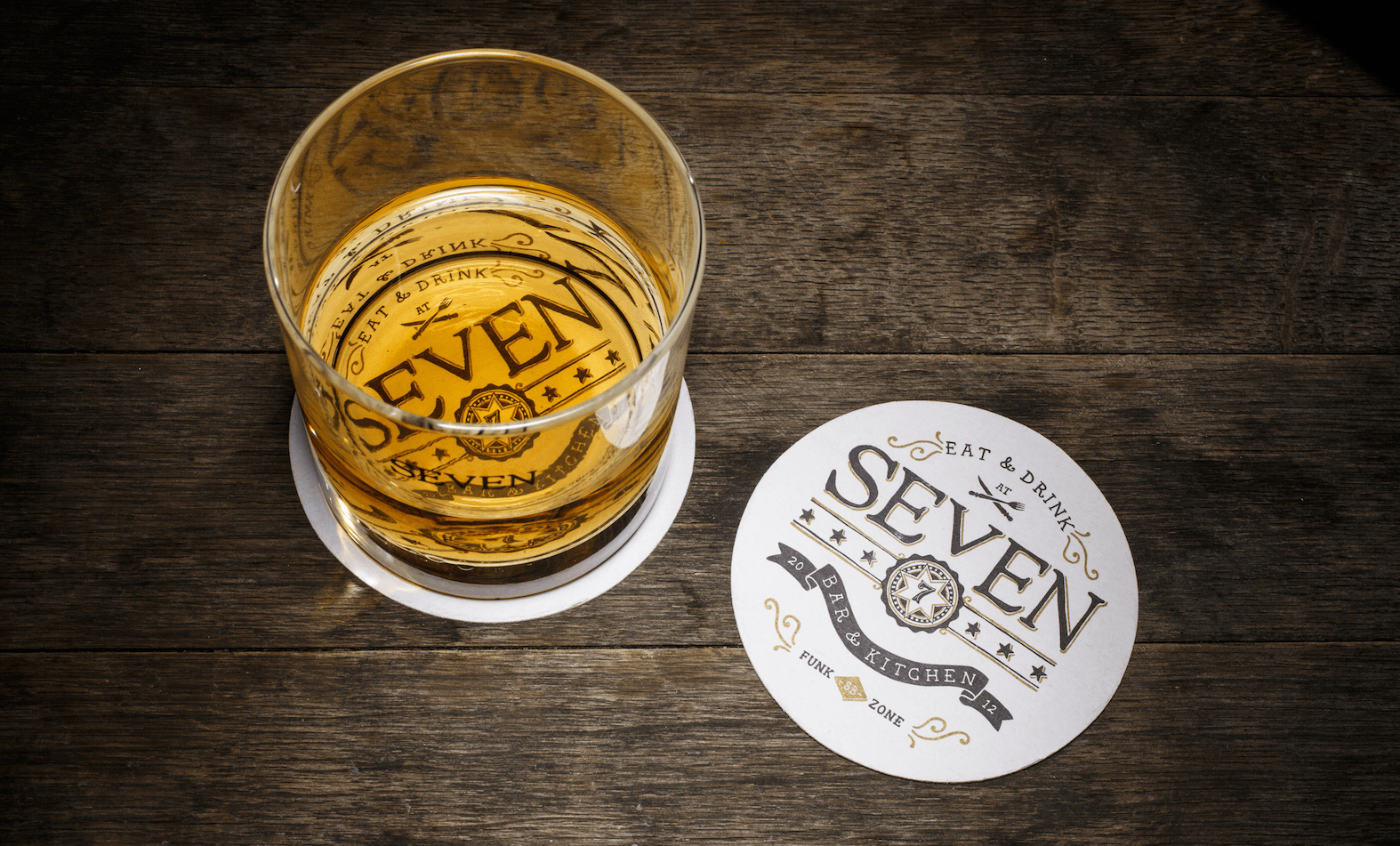
Image Via SLTWTR
A strong brand can also help you connect emotionally with your customers, which is particularly important when your bar is in an area that may trigger feelings of nostalgia or fond memories. For example, Park Distillery in Banff, Alberta chose to evoke the Rocky Mountains and camping in its branding – a choice that makes sense, given its location within Banff National Park. With this branding, Park Distillery creates an immediate association between itself and trips to Banff – and also creates a great potential market for souvenir items.
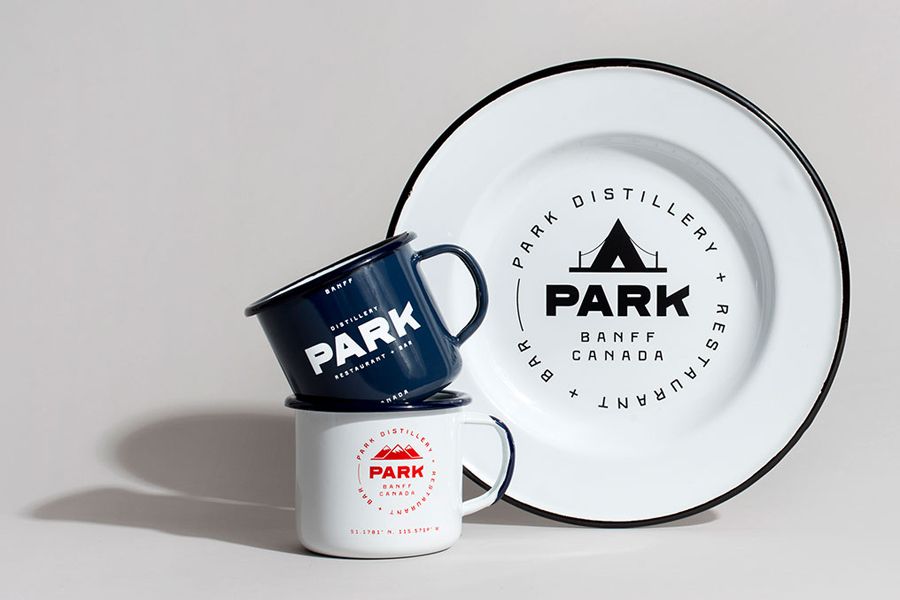
Image Via BP&O
Ultimately, a strong brand will bring great value to your business. Once you create a brand, it can be used across your marketing. It can create the kind of recognition, good will, and focus that helps your business succeed.
How to Build Your Bar’s Brand
Now that we have convinced you that you need a brand, the next phase involves actually creating one. How can you go about doing that? We have created a step-by-step guide to help you through the process.
Step One: Write a Mission Statement
Before you can get started on your branding, you have to have a solid idea of what your bar is trying to accomplish – and why. This is typically found in your business’ mission statement, which you may have already written as part of your business plan. A mission statement will reflect what your bar is all about, which is exactly what you want to show in your branding.
A mission statement should start with a value statement, which is a description of what sets you apart from other bars. A value statement shouldn’t be about your goals, but about what you believe in, what you want your customers to experience, or even the type of culture that you are trying to create.
Next, draft a vision statement, or a plan for the future of your bar. This should be just one or two sentences that explain what you want your establishment to become, or your company’s goals. For example, if you’re opening up a sports bar, your vision could include becoming the go-to spot for people in the area to watch the big game.
Finally, write your mission statement, which explains how you will achieve your goals. This statement should incorporate both your value and vision statements and focus on the “why” of your enterprise.
Why does your bar operate the way it does? Why does your bar serve what it serves? Your “why” should be one clear, concise, and consistent message that every person associated with your bar understands – employees and patrons alike.
A company that gets this right is Buffalo Wild Wings. They know what their purpose is and they communicate it in everything they do. They are a sports bar that specializes in chicken wings. This is apparent in their marketing, building design, employee uniforms, menu design, and promotions.
If you see their ads, they are covered in sports graphics, beer glasses, and chicken wings. No matter where you sit in the dining room or bar, you can see at least one TV with sports playing. This is a clear presentation of the company’s purpose. When you hear the words Buffalo Wild Wings, you think about wings, beer, and sports. Mission Accomplished.
The same concept can and should be applied to your bar. Think about what you are trying to convey, and what you want to accomplish. Use this information to write your mission statement – which will form the backbone of your branding.
Step Two: Do Some Market Research
No matter what your mission statement may be, if it doesn’t connect with the local market, it probably won’t boost your sales. Before you dive into branding, you’ll need to do some basic market research.
Take some time to look at the neighborhood or area where you want to open your bar. What kinds of properties are located nearby? What are the demographics of the neighborhood? If you’re planning to open in a community that has a lot of blue collar workers, for example, then you’ll probably have more success opening a neighborhood style bar than an upscale hipster joint with $20 cocktails.
You should also take a look at the competition in the area. If a particular type of bar doesn’t exist, there might be a good reason why: it simply isn’t something that locals want or need. But in some cases, the lack of a certain type of bar might be an indication that there is an opening in the market – which might represent a great opportunity for you to seize.
Step Three: Consider Your Target Audience
If you consult with an expert about your branding, one of the first things that they will ask you about is your target audience. Who do you want to patronize your bar? The answer to this question will play a huge role in how you develop your brand.
Your target audience can be very specific – like the LGBTQ+ community – or more general, such as young professionals. The key is to consider what demographic you are aiming to serve, and figure out what kind of branding might work for them.
If you have a target audience in mind, think about people you know who fit into that group. For example, if you want to open a wine bar that appeals to women who want to have a girls’ night, think about people you know who might want to go there – like your best friends – and what they might like when it comes to branding.
Step Four: Do Some Brainstorming
If you don’t already have a name and logo, now is the time to find one. You want to make sure that your name is original, both to avoid legal headaches and to stand out from the crowd. You also want a name and logo that shows what your brand is all about, and what makes it different.
There are a lot of different things that can inspire a great name and logo, like location, a favorite bit of pop culture or media, a sports team, or even a great pun. Think about what is important to you (go back to your mission statement!) and how your name and logo can convey that.
Finally, while there is some value to being clever (think Central Perk from Friends), make sure that your name and logo are simple enough for people to understand. An inside joke, an overly complicated name, or a cluttered logo will probably backfire on you. Instead, focus on a name and logo that are clear and concise.
Step Five: Consider Visual Impact
After you pick your name and logo, you will need to think about how they will look. Remember that whatever you choose should be carried out across your branding, from bar aesthetics to website, to branded disposable products. Make sure that whatever you choose looks great and can be translated across mediums.
Many entrepreneurs choose to work with a graphic designer for this stage. They’ll be able to choose colors, fonts, and shapes that really pop – and that are balanced, symmetrical, and appealing. A graphic designer can also scale a logo up and down so that it looks great wherever you place it.
Step Six: Stay Consistent
Whatever you ultimately decide on for your name, logo, and slogan, the most important step is the last one: being consistent. Your branding should be on everything, from your social media to your menus to the products that you sell in your store.
The secret to turning a product into a brand is consistency. Communicating the “why” of your business repeatedly to customers turns your product into a brand over time.
How is this done in practice? Try incorporating your branding into the following items:
- Signage – Should contain the logo and the message the logo represents
- Building Exterior – Easily visible, yet communicating your “why”
- Building Interior – Create an environment that oozes your purpose!
- Furniture and Fixtures – Contributes to the atmosphere of your bar
- Staff – Properly dressed and the right demeanor for your “why”
- Menu Design – Should contain selections that reflect your “why,” along with your logo and/or slogan
- Paper/Plastic Products – putting your logo onto custom plastic cups and other disposable products is a form of free marketing
- Receipts – be sure to include your logo, name, and slogan here, too!
- Social Media Accounts – Communicate your “why” to new and returning customers
- Email Marketing – Great way to remind your customers of your branding
- Business Cards – Communicate your “why” to clients and vendors
Consistent branding can increase revenue by a minimum of 23%. It can also help to build brand loyalty over time. When it comes to long term success, loyal customers are key – they are considered up to 10 times more valuable than a patron who makes a single purchase.
What’s the trick to being consistent? Be brand-focused in everything your business does. If your company colors are green and yellow, don’t send out mailers that are blue and red. Get your message out in your marketing, in your building’s presentation, and in your customer interactions.
Want to Learn More? Contact Budget Branders Today.
Running a bar isn’t for the faint of heart. If you have made the decision to open up a watering hole of your very own, creating a great brand can help you succeed. Once you have your branding in place, our company can help you take it to the next level.
Budget Branders offers a full line of high quality custom-branded disposable products for your restaurant, bar, brewery, or coffee shop. Our designers will put together mock-ups to show you just how amazing your logo can look on our paper cups, stadium cups, bags, and more. As a small, family-owned business, we know how important it is to be able to purchase affordable supplies – which is why we have some of the lowest prices on the market.
If you want to up your branding game, we’re here to help. Fill out a form to request a quote, or hit the live chat button at any time.
